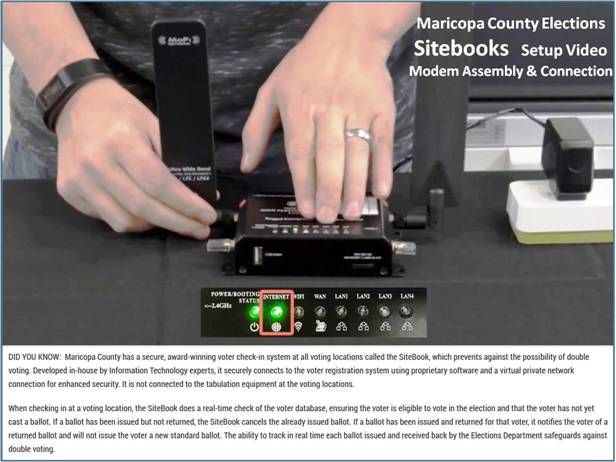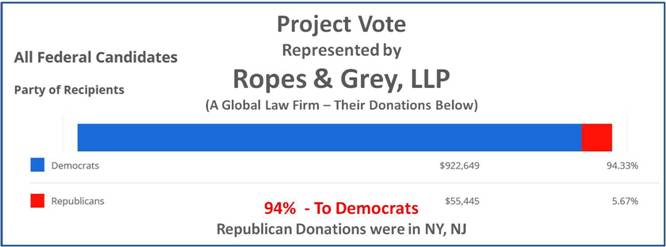The heart of Maricopa County’s elections is a system called VRAS, the Voter Registration Access System. It provides critical election functions, like real-time access to voter registration data, ballot and voting info, polling maps, candidate financial reports, ballot preparation, and polling location management, agreements, and so on. It includes a database to generate reports like the bilingual pollworker report. Or create lists of early voter information, or military voter information. It supplies the data needed by Runbeck Election Services to print the hundreds of different ballots for precincts. Runbeck also packs, distributes, and tracks all the ballots while updating VRAS.
VRAS was built internally, not by the Maricopa Board or it’s Office of Enterprise Technology (OET). It was created years ago by skilled software developers in the smallish IT Department of the County Recorder’s Office. Other than its SQL database, they used very little “off the shelf parts”. Not much is known about VRAS because of this approach. In May 2019 a working group hired by MCBOS released their findings about election structure and technology. It recommended the VRAS software be updated “just in case there’s an audit”.

Nowhere in the Work Group report, or the 32 page Election Day Report by consultant BerryDunn, is system security or preventing a data breach discussed. The County’s Internal Audit Department also never mentions security topics in their 2018 Report about Election Day activities. Can all this be a coincidence?
Unfettered access to VRAS would be “the keys to the kingdom” for those wanting to manipulate Maricopa elections. On November 5th, the FBI raided a home to serve their search warrant to 56 year old Elliot Kerwin, an IT expert. He’s accused of illegally accessing VRAS from his Phoenix area home. Because the FBI has been totally silent, with no leaks that Kerwin is MAGA, one can assume this former Milwaukee resident has ties to Democrats or radical leftists. Maricopa said he only accessed public available information. Yet the FBI took everything electronic, including his cars?

In 2017 the IT Department released their internally developed Sitebooks. It’s part of the VRAS system that tracks in real time when ballots are issued and received. Over 500+ voting locations now allow voters to “check-in” themselves using Sitebooks. They swipe their Drivers License or use other on screen options. The Sitebooks connects to VRAS servers, verifies the voter is registered and didn’t already vote. Sitebooks use Mofi cellular modems with VPN connections. Training videos from July 2020 show Sitebook and modem setup (below image), but oddly has only 32 views. Mofi Networks is a manufacturer in Toronto, just 32km from Dominion’s headquarters where founded.

If voter verification is approved, Sitebooks notify the “Sentio” printing station to print the ballot immediately. This “Ballot-on-Demand” printing station includes a laptop, proprietary Sentio ballot software, and a duplex printer. This setup is provided by Runbeck Election Services as a packaged service. The Sitebooks, printer laptops, and VRAS are all connected to the internet and talk to each other. After the voter completes their ballot, they deposit it into a tabulation machine. This is where Dominion Election Systems take over.

What’s unique about VRAS is it’s real time updates of just about everything. If you register online to vote, you’re added to the database in minutes. Because voters must use Sitebooks on election day, VRAS knows who was approved, essentially means they voted. VRAS also knows whose absentee ballots have been received. A bad actor with high level VRAS access could combine this voter data on election day. They could compare it to the voter registration database and determine the voters who did not vote. Illegal ballots could be printed in their names and injected into system as absentee ballots, or other. There are numerous ways VRAS could be manipulated. They could pump VRAS full of ghost voter registrations and remove them after the election. (Sound familiar – July 15th Senate hearing).
If bad actors wanted to manipulate ballots, or create ghost voters, certain data would be extremely helpful. This includes a list of every voter applicant – especially those rejected, cancelled, suspended, ineligible, or removed (think illegal aliens). You’d want to know how they registered (paper, online, or federal form) and current status. You’d want every request for absentee voting, early voting, provisional ballots, including dates and status. You’d then need to know about the mysterious VRAS, especially its database configurations. In 2017 the Maricopa County Recorder gave Project Vote this exact data, and more.

In early 2016 the Democrat operatives at Project Vote sued Helen Purcell (R), the County Recorder at that time. She intended to fight it in court. Several months later Democrat activist Adrian Fontes became the new Maricopa Recorder. Fontes entered into a Settlement Agreement with Project Vote. They received all that Maricopa’s voter data along with policies and procedures documents for VRAS related databases. It included an explanation for each database, its functions, any fields, codes, tables, manuals, guides, and any other materials used by IT staff for voter rolls. Project Vote certainly shared this data with fellow activists. They are now defunct, but the damage is done.

In his first transition team meetings in late 2016, Adrian Fontes discussed implementation of election policies provided by the Brennan Center. Three months later Fontes hired Rey Valenzuela to be Director of Elections. Valenzuela is also the Chair of theStandards Board for corrupt EAC (Election Assistance Commission). The IT Department under previous Recorder Helen Purcell did an incredible job. In addition to VRAS and Sitebooks, they created Kiosks and impressive GIS applications. Both systems won national awards. The IT Director (Terry) behind all these innovations, and the person keeping VRAS secure, was fired by Fontes well before the 2020 election. Fontes was replaced in January 2021, but the damage was already done.
Hat Tip Mark
